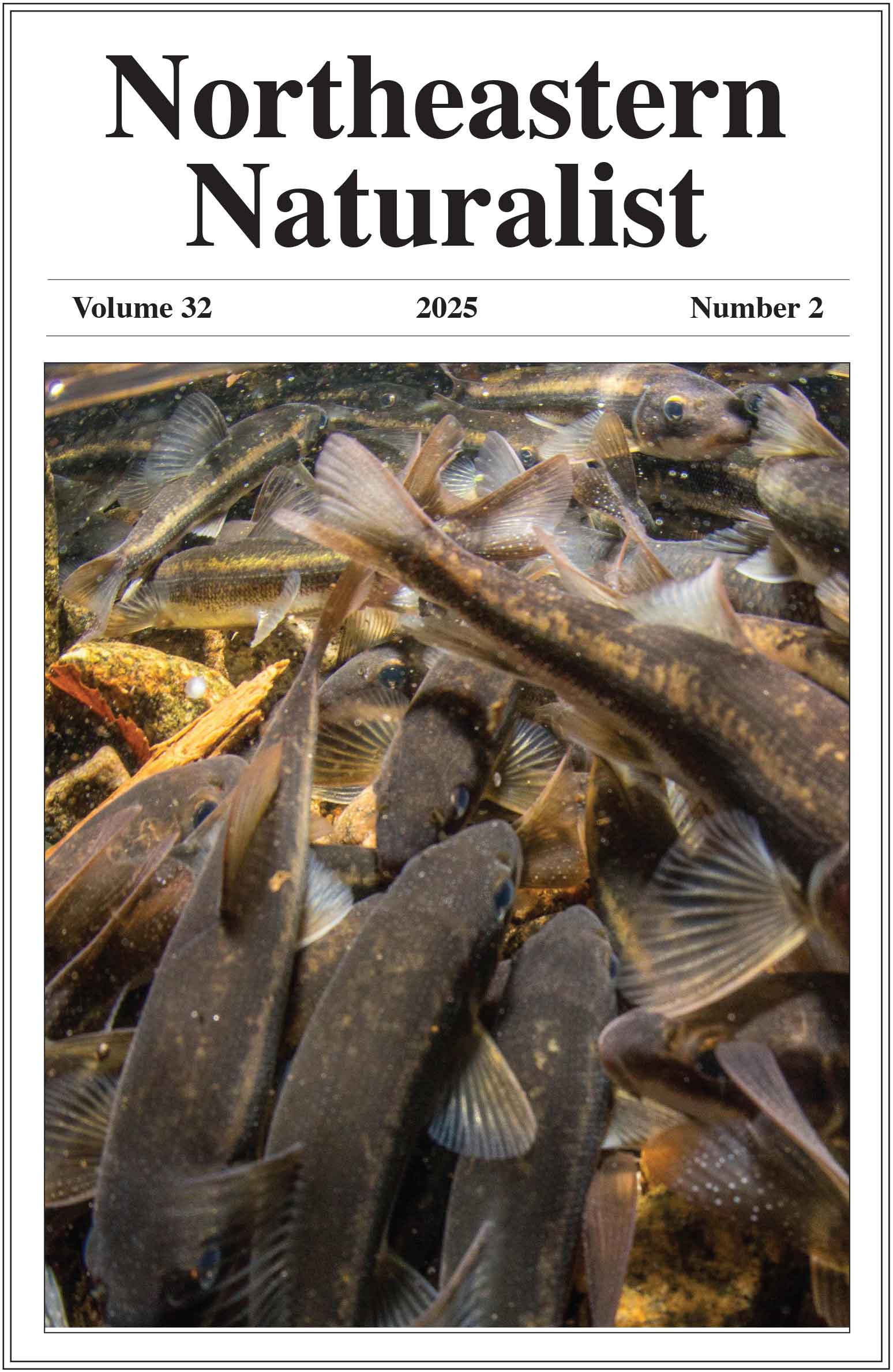The Brief Emergence of a Nineteenth-Century White Pine Forest from a Massachusetts Reservoir
W. Wyatt Oswald1,2,* and Barry S. Goodell3,4
1Marlboro Institute for Liberal Arts and Interdisciplinary Studies, Emerson College, Boston, MA 02116.2Harvard Forest, Harvard University, Petersham, MA 01366. 3Department of Microbiology, University of Massachusetts, Amherst, MA 01003.4School of Forest Resources, University of Maine, Orono, ME 04469. *Corresponding author.
Northeastern Naturalist, Volume 31, Issue 4 (2024): N35–N41
First published early online: 4 December 2024
Abstract
The draining of a reservoir in eastern Massachusetts for dam repairs revealed dozens of stumps and several segments of stone walls. We mapped and measured the diameters of all stumps in a 0.1-ha study plot and collected and analyzed tree-ring and wood-anatomy samples from 5 of the stumps. These analyses reconstructed a dense stand of young (<50 years old) Pinus strobus (Eastern White Pine) that recruited during 1826–1848, likely establishing after the site was logged or when the area was no longer used as pasture. Historical accounts indicate that the trees were cut in the fall/winter of 1873–1874, just prior to the inundation of the reservoir. This opportunistic study provides a snapshot of the mid-19th-century landscape of southern New England.
![]() Download Full-text pdf (Accessible only to subscribers. To subscribe click here.)
Download Full-text pdf (Accessible only to subscribers. To subscribe click here.)
Access Journal Content
Open access browsing of table of contents and abstract pages. Full text pdfs available for download for subscribers.
Issue-in-Progress: Vol. 32 (3) ... early view
Check out NENA's latest monograph and Special Issue:













 The Northeastern Naturalist is a peer-reviewed journal that covers all aspects of natural history within northeastern North America. We welcome research articles, summary review papers, and observational notes.
The Northeastern Naturalist is a peer-reviewed journal that covers all aspects of natural history within northeastern North America. We welcome research articles, summary review papers, and observational notes.